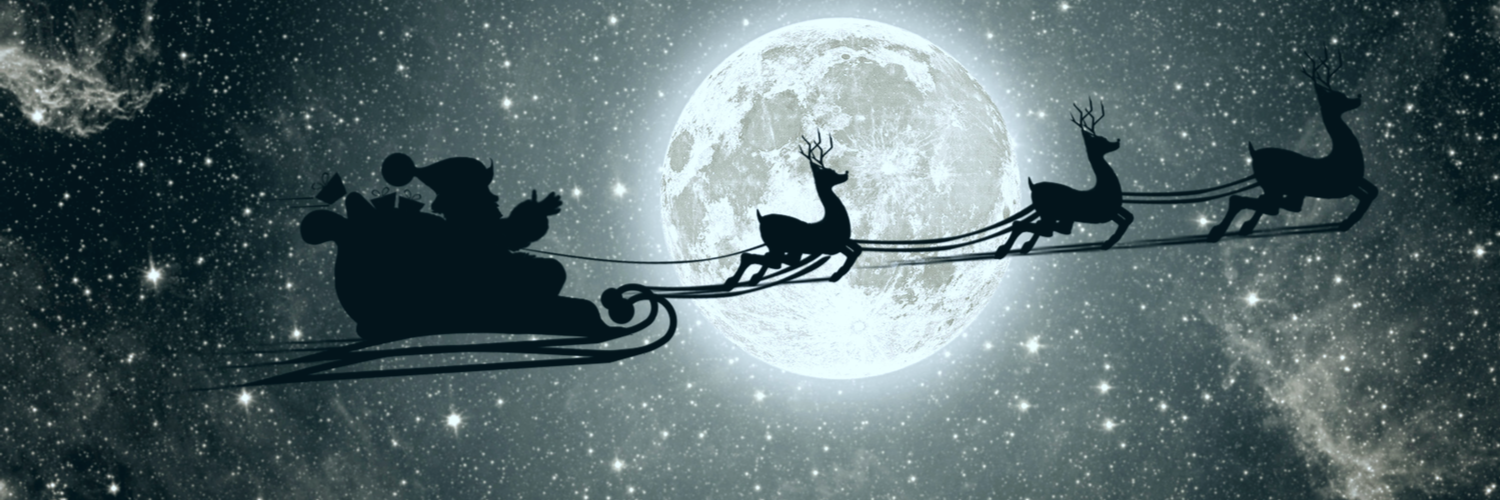NORAD’s tradition of tracking Santa
For the last sixty years, it’s been a tradition for the North American Aerospace Defense Command (NORAD) to track Santa as he travels around the world on Christmas Eve. Every year, the NORAD Santa tracking website is visited more than nine million times and volunteers answer more than 140,000 calls.
The story of how it all started
I first learned about the NORAD Santa Tracker a few years ago when I visited the website with my own children. While on the site, I came across the story of how the Santa Tracker started on Christmas Eve in 1955 when the Continental Air Defense Command (CONAD) Operations Center in Colorado Springs, Colorado received a call from a child asking to speak to Santa Clause. A local store had set up a phone number for children to call Santa and the number had been misprinted in the advertisement and accidentally directed calls to an unlisted number at the CONAD Operations Center (now known as NORAD).
The website tells how Colonel Shoup, later known as “Santa Colonel,” received multiple calls meant for Santa and decided to respond by asking his operators to determine where it was midnight at that time and reported the location of Santa to the children. The children (and staff at the command center) enjoyed the experience so much that they decided to do it again the next year.
I loved the story of the origin of the NORAD Santa tracker. It sounds like the plot of a Christmas special. I wanted to learn more about it so that I could write a heartwarming holiday blog about positive unintended consequences.
There was just one problem. Once I dug a little deeper into it, the story started to shift.
The plot thickens
I am a facilitator for ThinkReliability and researching the origin of the Santa Tracker went the way many investigations go. At the start of an investigation, there is an initial report or a brief summary on the incident about what occurred. Sometimes the information stays relatively constant, but many times the “facts” that you knew at the start turn out not to be accurate. I assumed that the NORAD website would be the best source of information about the origin of the Santa Tracker, but additional evidence indicates that wasn’t a valid assumption.
I found several articles with slightly different stories. In some versions, Colonel Shoup responded to the child’s call by saying he was Santa (rather than with reporting Santa’s location). In other stories, it was a little boy that called first and, in even different versions, a little girl. Some articles say the phone number was one digit off of the advertised Santa hotline, so several children misdialed, and others said the number was misprinted so a flood of children called CONAD. The different versions were enough to make me question the story, so I kept digging.
How the Santa tracking REALLY started
Finally I found a 2014 Atlantic article titled “Yes, Virginia, There Is a NORAD.” It said Colonel Shoup received only one call in 1955, from a child who misdialed a correctly printed number for a Sears Santa hotline. According to the article, Colonel Shoup responded to the child’s inquiry by saying, “There may be a guy named Santa Claus at the North Pole, but he’s not the one I worry about coming from that direction.” While it could have been worse (he at least noted that Santa may be at the North Pole…), it isn’t exactly an interaction expected to ignite a decades long holiday tradition.
It is difficult to investigate something that happened decades ago and it is possible that the Atlantic article missed some of the facts despite their best intentions, but the level of detail and evidence presented make me believe that the real origin of the Santa Tracker is a little less of a holiday miracle than I initially believed.
It appears that what Colonel Santa may have lacked in holiday cheer, he made up for in marketing genius. His staff had drawn a flying Santa on the board for tracking unidentified aircraft as a joke. This reportedly inspired him to have his public relations officer tell the media that CONAD was tracking and guarding Santa while he made his Christmas trip to the U.S. as a clever way to brag about cutting-edge capabilities and boost CONAD’s profile.
The media loved it. The next year, reporters from the Associated Press and United Press International called and asked if CONAD was tracking Santa again, and a tradition was born.
Lessons learned
While the actual origin of the Santa Tracker may have been more a savvy PR move than spontaneous holiday cheer, it is worth noting that something sweet and positive did grow out of it. The NORAD Santa Tracker is a fun tradition for many families and the volunteer effort required to pull it off is an impressive display of holiday spirit.
So, please continue to enjoy tracking Santa with your family, but don’t forget that the lessons behind the origin story of the Santa Tracker go beyond the power of spreading holiday cheer.
The widespread misinformation about the origin of the Santa Tracker is a good reminder to dig deeper when investigating an incident. Don’t trust a single source, even if it appears reliable. Don’t assume that the story that everybody knows is the right one, especially if it sounds too good to be true.
To learn how to dig deeper in your investigations, register for this week's webinar, "Introduction to 5-Why for Frontline Professionals." This FREE, 45 minute root cause analysis webinar will show you and your frontline team how to tap into existing resources and improve your organization’s ability to respond and reduce the likelihood of catastrophic events.











